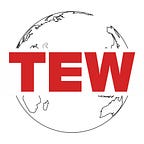Porter’s Five Competitive Forces Analysis
This theory of five competitive forces analysis was given by Michael Porter, and is also often called as Porter’s Five Forces. This theory proves to be a powerful tool to understand the competitiveness of the business environment. With it, you can identify the potential profitability of your strategies.
This theory of five competitive forces analysis was given by Michael Porter, and is also often called as Porter’s Five Forces. This theory proves to be a powerful tool to understand the competitiveness of the business environment. With it, you can identify the potential profitability of your strategies.
This is important for the growth of your business because when you understand the factors that might affect the profitability, you are then free to make changes in your business strategy, adjust it accordingly without any effect on your profitability.
Let us look at Porter’s Five Forces analysis, how they can have an impact on your long-term profitability and identify the strengths and weaknesses of your business.
In this analysis, Porter recognized that all the organizations are most likely to keep a watch on the rival organizations. But he encouraged the leaders to look beyond their competitors and look at the factors that could impact the business environment.
What makes up the competitive environment?
1.Competitive Rivalry –
Competitive Rivalry is the number and strength of your competitors. Here you look at the questions like How many rivals you have? Who are they and what is the quality of their products and services? How does it compare to yours?
The companies can implement strategies like aggressive price cuts and strong marketing campaigns to attract the customers where there is intense rivalry. So if your customers and suppliers feel like they are not getting a good deal from you, they can turn to others.
On the other hand, where the competitive rivalry is minimum, almost negligible, where you product is unique in the market; you will most likely have tremendous strength and healthy profits.
2. Supplier Power-
The supplier power depends on how easy it is or your suppliers to increase or decrease the prices. The questions you need to ask are- What is the number of your potential suppliers? Is the product or service they provide unique? And lastly how expensive it would be for you to switch from one supplier to the other.
If there are a number of potential suppliers, it will only get easy for you to switch to a cheaper option. But if it is the opposite, where the suppliers are lesser, their position and ability will be stronger. This can impact your profits.
3. Buyer Power –
Is it easy for your buyers to drive your prices down? What is the number of buyers you are dealing with and how big are their orders? Is it easy for them to switch from your products to your rival’s?
Here is a simple equation,
The less the buyers, the more power they have. But the more the buyers, your power increases.
4. Threat of Substitution –
Threat of substitution is when your customers find something that is similar to what you do. In some cases, it can also be cheaper and a little better than your services.
Thus a substitution that is cheap and gives more or less the same results can pose as a serious threat to your business. This will weaken your position and also have an impact on the profitability.
5. Threat of New Entry –
Other than substitution, what is more dangerous is the threat of a new entry. How easy is it t enter your industry?
If it is easy and it takes a little effort to enter the market, it is certain that your rivals will enter the market and weaken your position. But if your barriers to entry are strong and durable, then you will be able to preserve your position in the market with favorable profits.
According to Porter’s, these five Competitive forces analysis are the key sources to the pressure in industry. It is important to differentiate these factors and not confuse them with the other causes like the growth rates, government interventions, and even technological inventions. Because these are temporary factors whereas the Five Forces are permanent.
So in order to not let the competition sweep you away, you need to stress on each of the forces and note your observations.
Next you need to think of the factors that are relevant to your market situation. And then lastly, summarize the size and scale of the diagram.
This process will give you an insight on how and what factors are affecting your business. You can reinforce necessary changes to improve your industry position and with it also increase the profitability of your business.
